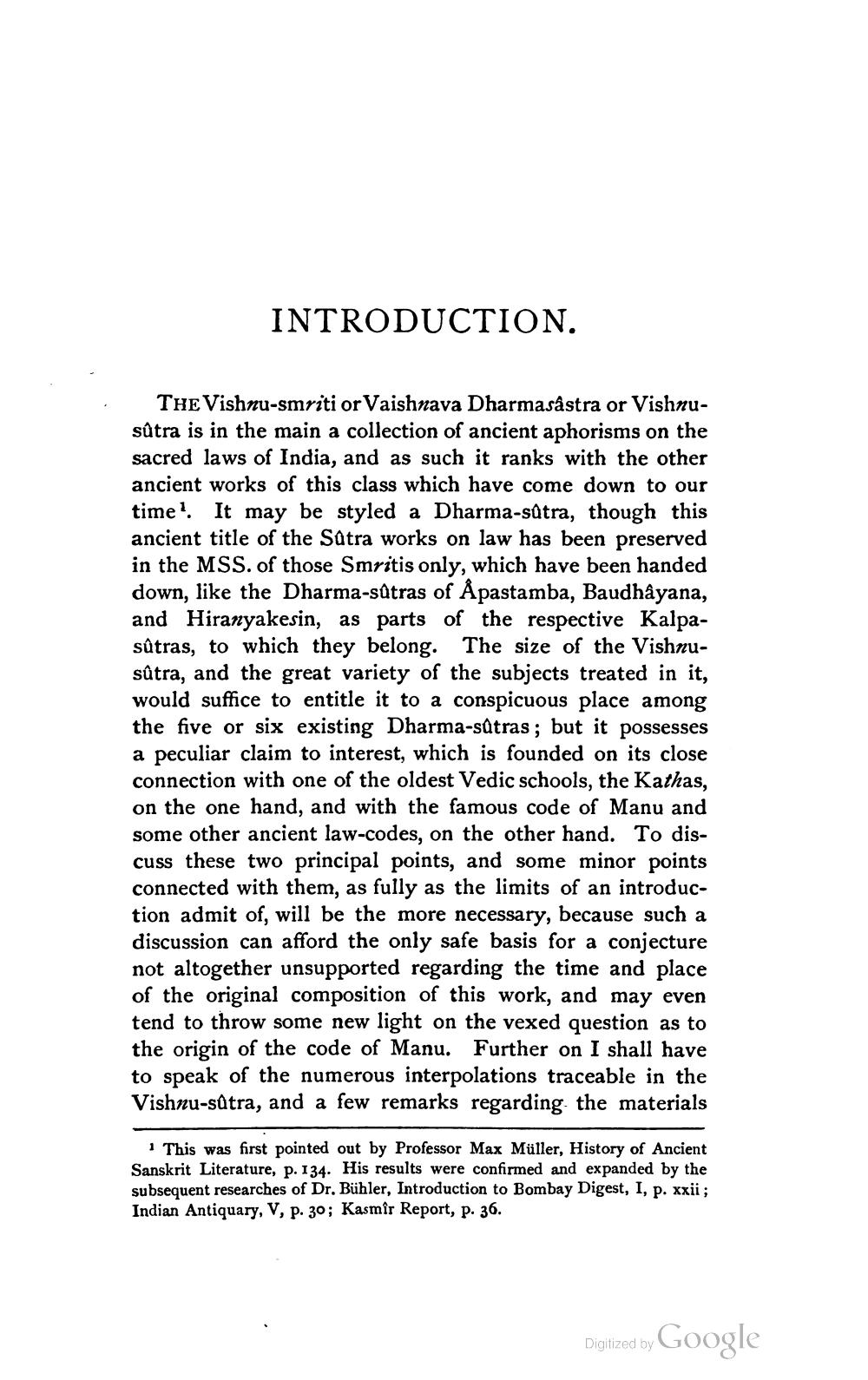________________
INTRODUCTION.
THE Vishnu-smriti or Vaishnava Dharmasâstra or Vishnusûtra is in the main a collection of ancient aphorisms on the sacred laws of India, and as such it ranks with the other ancient works of this class which have come down to our time1. It may be styled a Dharma-sûtra, though this ancient title of the Sûtra works on law has been preserved in the MSS. of those Smritis only, which have been handed down, like the Dharma-sûtras of Apastamba, Baudhâyana, and Hiranyakesin, as parts of the respective Kalpasûtras, to which they belong. The size of the Vishnusûtra, and the great variety of the subjects treated in it, would suffice to entitle it to a conspicuous place among the five or six existing Dharma-sûtras; but it possesses a peculiar claim to interest, which is founded on its close connection with one of the oldest Vedic schools, the Kathas, on the one hand, and with the famous code of Manu and some other ancient law-codes, on the other hand. To discuss these two principal points, and some minor points connected with them, as fully as the limits of an introduction admit of, will be the more necessary, because such a discussion can afford the only safe basis for a conjecture not altogether unsupported regarding the time and place of the original composition of this work, and may even tend to throw some new light on the vexed question as to the origin of the code of Manu. Further on I shall have to speak of the numerous interpolations traceable in the Vishnu-sutra, and a few remarks regarding the materials
1 This was first pointed out by Professor Max Müller, History of Ancient Sanskrit Literature, p. 134. His results were confirmed and expanded by the subsequent researches of Dr. Bühler, Introduction to Bombay Digest, I, p. xxii; Indian Antiquary, V, p. 30; Kasmir Report, p. 36.
Digitized by Google




